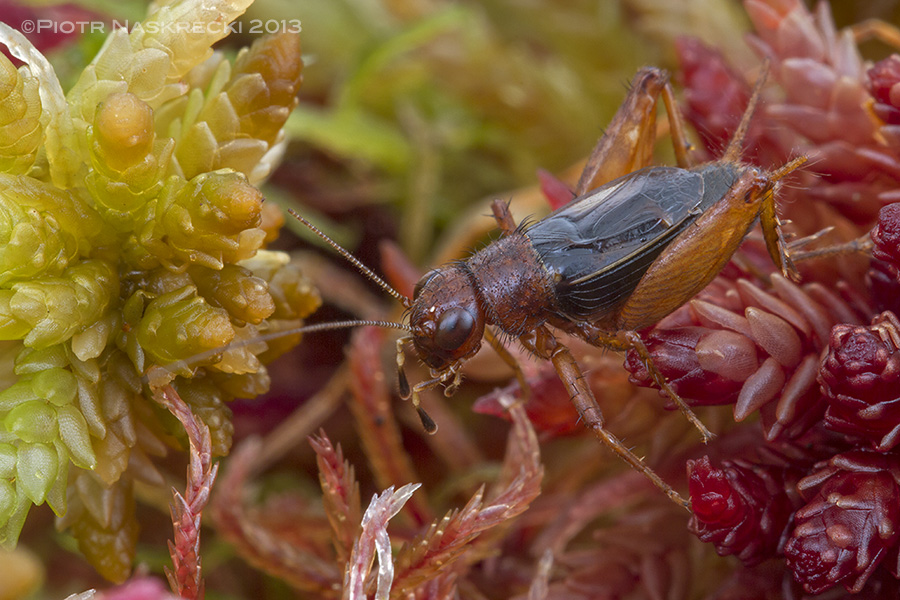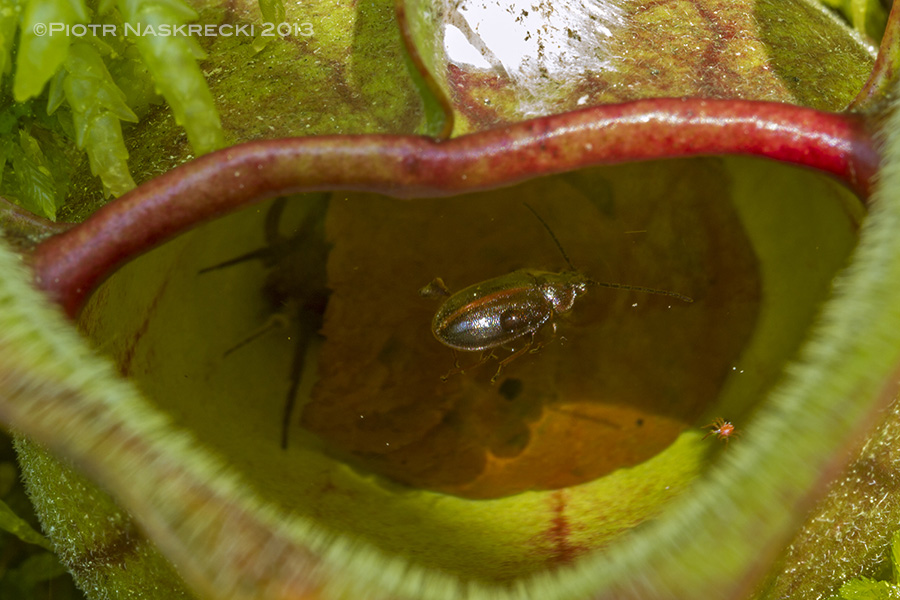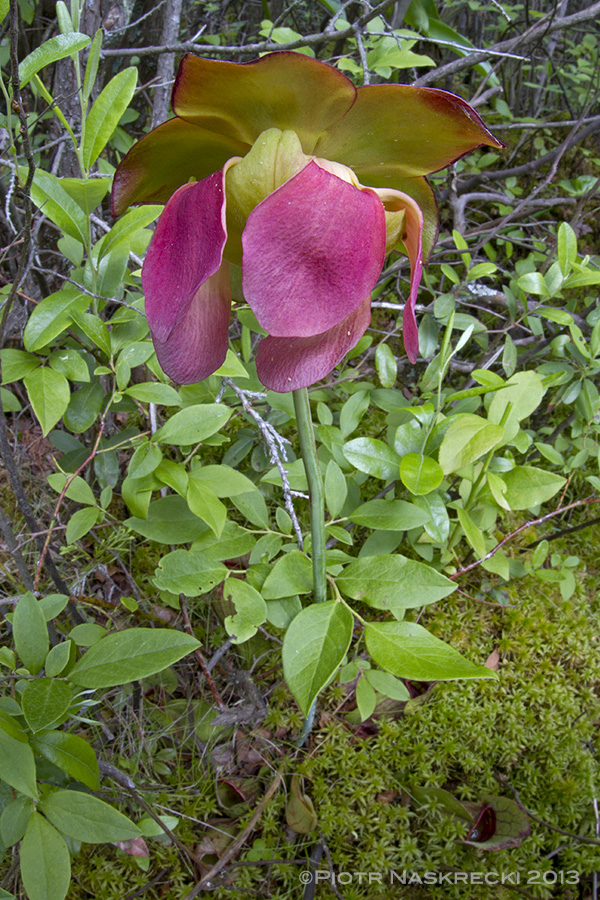
The one thing about plants that we take for granted is that they cannot really hurt you. Sure, some are full of toxic compounds and can be deadly poisonous if ingested. Others are covered with nasty spines or irritating hairs, and a tree can fall on your head during windy weather and crack your skull. But we feel pretty secure in the fact that no plant can hunt and eat you. Things would be very different, however, if we weren’t some of the largest animals on the planet.

I was having these thoughts last Sunday when I went looking for another singing insect, the minute Sphagnum ground cricket (Neonemobius palustris), one of a few species of New England acoustic orthopterans that I had never managed to get a recording of. I decided to try looking for it at Ponkapoag Bog in the Blue Hills Reservation, about 10 miles S of Boston. Almost immediately after stepping on the wooden planks that run through the soggy Sphagnum bog I started hearing the characteristic, high-pitched tinkling of those small crickets. But it took me a while to find one, and I only managed to do so after a considerable amount of crawling on all fours, waving a shotgun microphone to pinpoint the source of the sound. Eventually I located one individual in a sunny spot, deep in a clump of red and green moss. As I was recording his song, I also marveled at the idyllic setting of this species’ home. “What a great place to live for an insect”, I thought, “no predaceous ground beetles, no centipedes, water and food plentiful.” But then I heard behind me somebody say “Look honey, bladderworts! They catch and eat aquatic insects.” Right, I forgot about the killer plants.

Bogs are strange communities, not quite aquatic, not quite solid ground. The constant presence of low levels of water leaches nutrients from the soil, making the habitat extremely poor in minerals, particularly nitrogen. Some plants can fix atmospheric nitrogen thanks to a symbiotic relationship with cyanobacteria in their root system, but most need to find another way, and some do so by becoming carnivorous. I looked around and just a couple of feet from where my cricket was happily singing sat a gaping mouth of the pitcher plant (Sarracenia purpurea). The plant was half hidden in the moss, the lower lip of its pitcher conveniently at ground level, its entrance inviting to any cricket looking for a hiding place or something to eat. The bottom of the pitcher was dark with half-digested bodies of insects, a few still floating on the surface. The lip’s surface was covered with backward-pointing spines, making it easy for an insect to walk in, but virtually impossible to leave. It was as if you walked into your local grocery store, only to realize that you are in the Little Shop of Horrors.

In addition to bladderworts and pitcher plants, Ponkapoag Bog is a great place to see honeydews (Drosera rotundifolia). Unlike pitcher plants, which lure and drown insects, sundews actively grab them with their sticky, glandular tentacles that cover their modified leaves. They mostly catch small midges and gnats, but I saw one plant successfully capture a pretty big damselfly using two of its leaves at once. Of course the insect must first touch the plant, but once it does, it is pretty much doomed as the leaves curl and immediately start digesting the prey. I often complain that our huge body size prevents humans from appreciating most of the richness and beauty of the natural world, but carnivorous plants are another reason to think that maybe it is not such a bad thing after all.





Heya i’m for the primary time here. I came across this
board and I find It really useful & it helped me out much. I’m hoping
to present something again and aid others like you aided me.
surgery annd medicus okulista szczecin usg. surgery
Louis Rams): Jackson was a premier back a few years ago.
Sundays should be gleefully occupied with an all-day bacchanalia of football consumption.
They due to the lack of training and requisite practice under the guidance of expert footballers remain Amateurfussball for too
long.
One of my friends excels at the game because he has a photographic memory.
“My main rule of thumb is to never give the boyfriend any cause for suspicion, and not getting back to him quickly when he calls or texts would definitely do
that,” says Kelsey, a 27-year-old med student. The Hollywood film industry
is an enormous business and the movie producers are more than willing to gamble millions
of dollars making movies because they know that movie lovers like
ourselves are willing to cough up their hard earned
money to go the movie theater and watch their film.
I find it amazing how musical the slowed down Neonemobius (and relatives’) songs are.
And it is not merely nitrogen fertilizer that has pitcher plants losing their appetite for insects. A component of acid rain is nitrates dissolved in the water that provides a nitrogen rush for these plants. In Europe, as you probably know, high diversity calcareous grasslands characterized by plant associations adapted to low nitrogen levels have succeeded to near monocultural fescue meadows because of nitrifying rain.
Reblogged this on Mark Solock Blog.
Indeed our large size is both a blessing and a curse.
One thing, I had thought the low fertility of bogs was related to their growing medium being largely made of the skeletons of Spahgnum moss, rather than leaching, since they essentially do not drain to effect leaching.
And last but not least, that little cricket’s song seems more complex than I expect, with little accompanying clicks and portions at different pitch and loudness (even without the slowed down part). Can you comment on that?